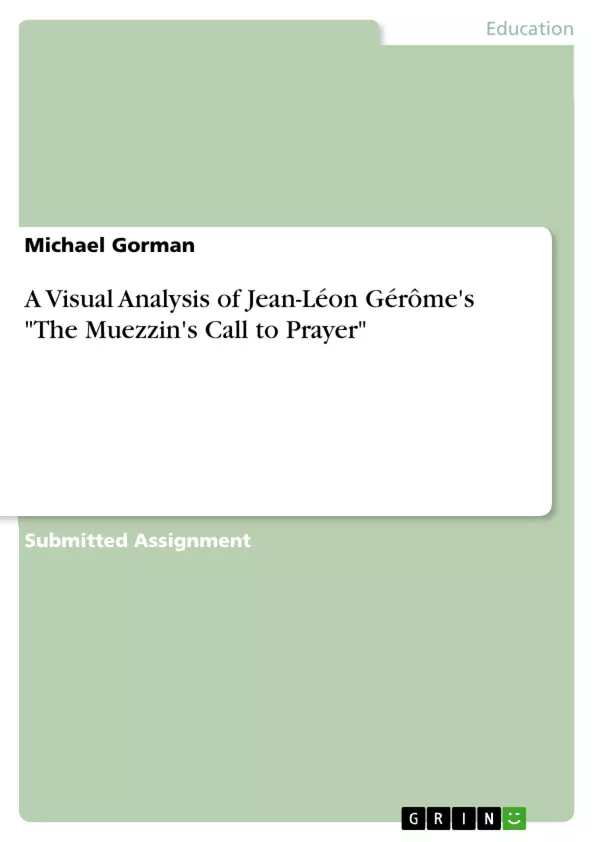The purpose of this essay is to provide a visual analysis of Jean-Léon Gérôme’s 1879 oil-painting: "A Muezzin Calling From The Top Of A Minaret The Faithful To Prayer" sometimes referred to simply as "The Muezzin's Call to Prayer". For the sake of time and space, this essay will be using the latter title. It is an example of Orientalism (part of the Realism movement) and is currently located in a private collection. Little information about where the painting was created can be ascertained—he was, however, known to have made many trips to Egypt during his lifetime, so it was likely that it was on one of these such trips that he created the painting.
Inhaltsverzeichnis (Table of Contents)
- Introduction
- Jean-Léon Gérôme
- Orientalism
- Artistic Principles and Elements
- Visual Analysis
- Primary Sources
- Secondary Sources
- Image Sources
Zielsetzung und Themenschwerpunkte (Objectives and Key Themes)
This essay provides a comprehensive visual analysis of Jean-Léon Gérôme's 1879 oil-painting, "The Muezzin's Call to Prayer," highlighting its artistic elements and contextualizing it within the Orientalist movement.
- A visual analysis of "The Muezzin's Call to Prayer" by Jean-Léon Gérôme
- The role of Orientalism in Gérôme's artistic production
- Key artistic principles and elements employed in the painting
- The historical and cultural context of the painting
- The artist's artistic journey and career trajectory
Zusammenfassung der Kapitel (Chapter Summaries)
The "Introduction" sets the stage for the visual analysis by introducing the painting and its title, and providing a brief overview of the essay's structure and purpose. The "Jean-Léon Gérôme" chapter explores the artist's life and career, focusing on his early artistic training, his involvement in the Neo-Grec movement, and his eventual shift towards Orientalism. The "Orientalism" chapter examines the artistic and cultural context of Orientalism, its influence on Gérôme's work, and the key characteristics of this artistic movement. The "Artistic Principles and Elements" chapter delves into the fundamental principles and elements of artistic creation, providing a theoretical framework for the visual analysis that follows. The "Visual Analysis" chapter then systematically dissects the painting, examining its composition, color palette, brushwork, and symbolism to reveal the artist's intentions and messages embedded within the work.
Schlüsselwörter (Keywords)
The key terms and concepts explored in this essay include Jean-Léon Gérôme, "The Muezzin's Call to Prayer," Orientalism, Realism, Neo-Grec, visual analysis, artistic principles, composition, color palette, brushwork, symbolism, and historical context.
- Quote paper
- BA Michael Gorman (Author), 2016, A Visual Analysis of Jean-Léon Gérôme's "The Muezzin's Call to Prayer", Munich, GRIN Verlag, https://www.grin.com/document/345082



